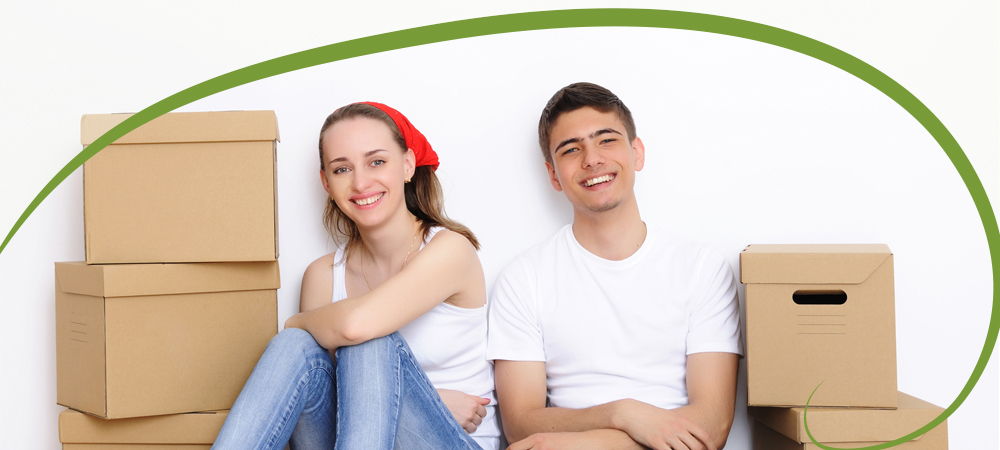Smart Packing Strategies for Stress-Free House Relocation
Posted on 25/05/2025
Smart Packing Strategies for Stress-Free House Relocation
Moving house is an exciting new chapter, but the task itself can be overwhelming. Smart packing strategies are your secret weapon for a smooth and stress-free relocation. Whether you're moving across the street or across the country, organizing your belongings properly not only eases the physical transition but also protects your cherished possessions. In this in-depth guide, we'll reveal expert packing tips, effective planning advice, and insider techniques to ensure your house move is as effortless as possible.
Why Smart Packing is Essential for House Relocation
Relocating to a new home involves a myriad of decisions. One of the most critical is how you pack your belongings. Effective packing minimizes stress, saves time, reduces the risk of damage, and helps you settle into your new dwelling with ease. With the right strategies, your moving experience can go from chaotic to seamless.
The Benefits of Efficient Packing
- Reduces Moving Costs: Smart packing cuts down on the number and size of boxes needed, saving money on packing materials and transport.
- Protects Your Belongings: Well-organized packing protects fragile and valuable items from damage during transit.
- Makes Unpacking Easier: Unpacking is far more manageable when boxes are well-labeled and items organized logically.
- Minimizes Stress: Knowing you have a plan in place helps to alleviate anxiety.
- Saves Time: Efficiency in the packing process gives you more time to focus on other critical aspects of the move.

Pre-Move Preparation: The Foundation of Stress-Free Relocation
Preparation is the key to a stress-free home move. Before the packing begins, there are several essential steps that set the groundwork for a successful relocation:
1. Declutter and Downsize
Use this opportunity to evaluate your belongings and decide what truly matters. Reducing your load can lower moving costs and save time. Dedicate a few days to sort through each room, separating items into the following categories:
- Keep: Items you use regularly and want in your new home
- Donate: Gently used items that someone else could benefit from
- Sell: Possessions with value that you don't need anymore
- Discard: Broken, outdated, or unusable items
2. Create a Personalized Moving Checklist
A customized moving checklist streamlines the process and ensures nothing is forgotten. Your checklist should cover:
- Setting moving dates and booking removal services
- Alerting utility providers and updating your address
- Gathering packing supplies
- Scheduling cleansing days for your old and new home
3. Gather Quality Packing Supplies
Invest in quality packing materials for maximum protection and ease. Essentials include:
- Various-sized boxes (small for heavy items, large for light, bulky ones)
- Bubble wrap and packing paper for fragile belongings
- Heavy-duty tape and a tape dispenser
- Labels and permanent markers for marking boxes
- Scissors, zip ties, and resealable bags
- Furniture covers, blankets, and stretch wrap for large items
Room-by-Room Packing Strategies for a Smooth Move
The best way to maintain order during your move is by packing room by room. This approach keeps similar items together and simplifies both packing and unpacking.
Kitchen Packing Hacks
- Pack dishes vertically like records, separated with bubble wrap or packing paper for extra cushioning.
- Use original boxes for appliances when possible, adding extra padding if needed.
- Bundle utensils by type with rubber bands and place them in labeled bags.
- Seal spices in ziplock bags to prevent spills and keep similar items together.
- Pro Tip: Don't forget to defrost and clean your refrigerator at least 24 hours before moving day.
Bedroom Packing Techniques
- Pack off-season clothes first, keeping only a capsule wardrobe out for essentials.
- Use suitcases, baskets, and even empty drawers for transporting clothes -- no need to remove items from hangers for short moves.
- Protect mattresses and pillows with special covers or sheets.
- Store shoes in original boxes or wrap them in pairs using packing paper.
- Label bedding, sheets, and pillowcases for easy identification.
Bathroom Packing Recommendations
- Place toiletries in sealed bags to prevent leaks or spills.
- Pack a separate "first night" kit with all essentials for each family member.
- Dispose of nearly empty or expired products safely before moving.
- Wrap fragile items like mirrors in towels for protection.
Living Room and Electronics Packing Tips
- Use original packaging for electronics whenever possible.
- Take photos of cable and wire setups for easy reassembly later.
- Label remote controls and chargers and pack them together.
- Wrap TV screens and glass surfaces with blankets or bubble wrap.
- Disassemble large furniture for safer transportation.
Labeling & Inventory: Your Moving Day Lifesaver
Labeling is crucial for a hassle-free house move. Knowing what's inside each box and where it belongs saves you precious time after the move. Here are some trusted labeling strategies:
- Label on Multiple Sides: Write clearly on at least two sides and the top of every box.
- Use Color Coding: Assign a unique color per room, using colored markers or tape for instant recognition.
- Number Your Boxes: Maintain a master list with contents and a box number system -- useful for confirming all items arrive safely.
- Special Markings: Use 'Fragile' stickers, 'This Side Up', and 'Open First' as required.
Pro Tip: Keep inventory sheets on your smartphone or cloud storage for instant access during your move.
Maximizing Space: Smart Packing and Stacking Techniques
Efficient use of every box keeps the move compact and organized:
- Fill Gaps: Use towels or soft items to fill empty spaces in boxes.
- Heaviest First: Place heavier items on the bottom and lighter ones on top within each box.
- Don't Overfill: Overpacking leads to broken boxes and damaged contents. Each box should be comfortably liftable by one person.
- Stack Strategically: In the moving truck, heaviest and largest boxes go at the bottom.
- Essential Items Last: Pack the last box with things you'll need immediately in your new home -- cleaning supplies, chargers, toiletries, and basic cookware.
Secrets to Packing Fragile and Valuable Items
Worried about delicate items surviving your house move? Follow these smart packing strategies to minimize risk:
- Double Box: For particularly fragile items, pack them first in a small box with padding, then place that box inside a larger, well-cushioned box.
- Layer Protection: Use bubble wrap, foam sheets, and soft blankets to create layers of cushioning.
- Secure Artworks: Use specialty artwork boxes or sandwich paintings and frames between sheets of cardboard before wrapping them.
- Protect Documents: Place important documents, jewelry, and other valuables in a separate, secure bag that travels with you rather than the moving truck.
Utilizing Technology for an Organized Move
Embrace modern moving apps to take your packing skills to the next level. Some benefits and options include:
- Inventory Apps: Catalog every box's contents with apps like Sortly, Encircle, or Moving Organizer Lite.
- Checklist Managers: Digital checklist tools like Trello or Microsoft To Do keep your planning efficient and visible.
- QR Codes: Advanced labeling systems allow you to place QR codes on boxes, scanned to reveal detailed contents.
Essential Items: Don't Pack These Until the Last Minute
Even the most organized move requires certain everyday essentials to remain with you until moving day. Consider preparing a "last out, first in" box containing:
- Toiletries and medications
- Phone and device chargers
- Bedding for the first night
- Basic cookware and cutlery
- Cleaning materials
- Important documents (IDs, passports, contracts)
- Snacks and water
- Pet supplies, if needed
Tip: Transport this essentials box personally rather than in the moving truck.
Moving Day: Staying Calm and On-Track
On the day of your house relocation, your smart packing approach will pay off. Here's how to stay stress-free:
- Start early and remain flexible for last-minute changes.
- Work methodically by room, with inventory and labels guiding movers and helpers.
- Double-check closets, drawers, attics, and basements for overlooked items.
- Communicate clearly with your moving team or helpers.
- Keep your phone, valuables, and the essentials box close at all times.
Unpacking with Ease: Setting Up Your New Home
Unpacking is a breeze when everything has a place and is clearly labeled. Follow these steps to make settling in a joy rather than a chore:
- Start with essentials: Set up beds, bathrooms, and the kitchen first.
- Work room by room using your color-coded, labeled boxes.
- Flatten, collect, or recycle boxes and packing materials as you go to reduce clutter.
- Organize storage spaces before filling them to avoid future chaos.
- Update your address with local services, and introduce yourself to neighbors for a fresh start in the community.

Frequently Asked Questions about Packing for House Relocation
How far in advance should I start packing for a move?
Begin packing 4-6 weeks before your moving date. Start with non-essential items and seasonal gear, gradually working up to everyday essentials as moving day nears.
Should I hire professional packers or do it myself?
If time is tight or you have many fragile or valuable possessions, professional packers can save you stress. However, with proper organization and the packing strategies above, most households can manage a successful DIY pack.
What is the best way to protect breakables during a move?
Layer items with bubble wrap and packing paper, double-box when appropriate, and fill gaps in boxes to prevent shifting. Clearly mark all fragile boxes to alert movers.
Conclusion: Move Confidently with Smart Packing Strategies
Relocating your household doesn't have to be daunting. By following smart packing strategies for stress-free house relocation, you can protect your belongings, save time and money, and start your new adventure on the right foot. Remember, planning and organization are key, and with the right approach, your next move will be smooth and rewarding. Happy moving!
```








